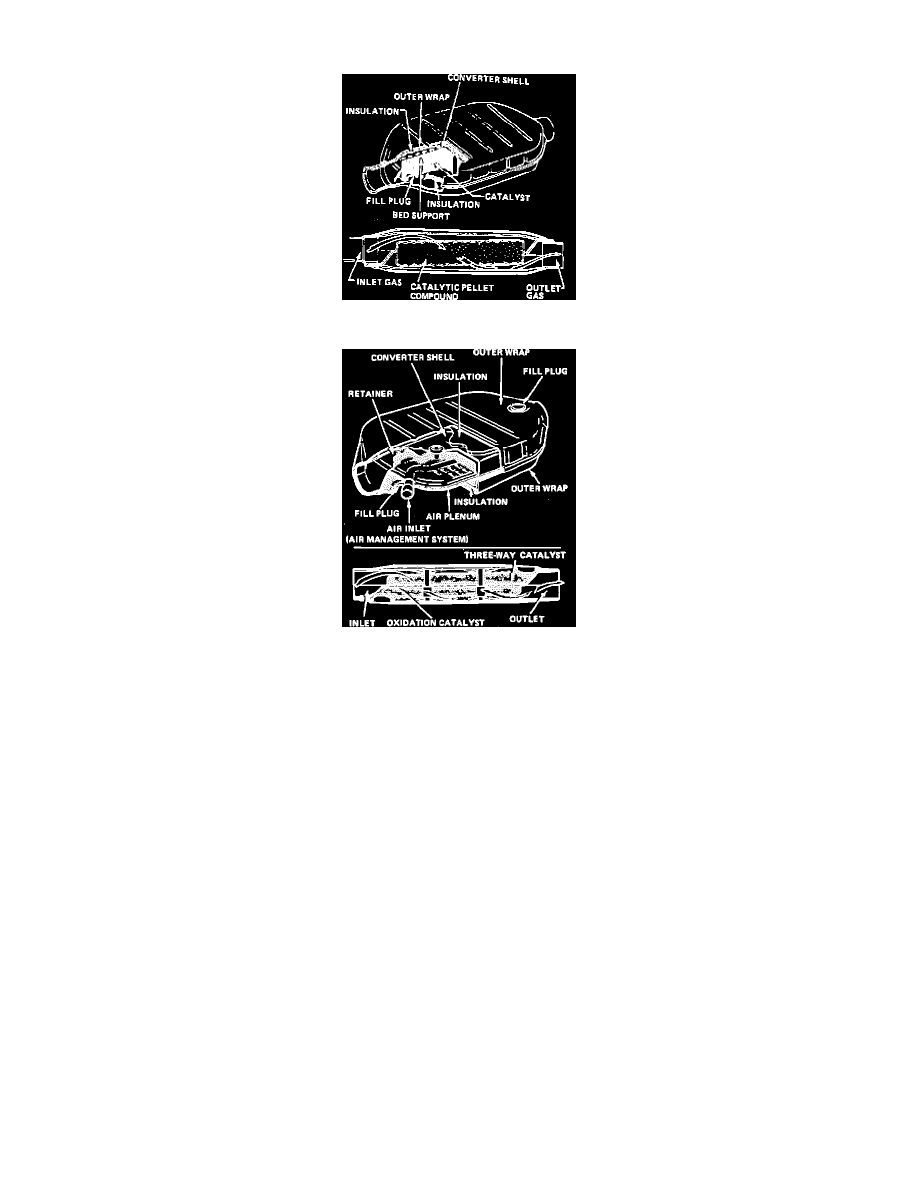Sephia Sedan L4-1.6L SOHC 16V (1993)

Catalytic Converter: Description and Operation
View: Typical Catalytic Converter
View: Typical Catalytic Converter
Catalytic converters are used to convert carbon monoxide (CO), hydrocarbon (HC) and oxides of nitrogen (NOx) into water vapor (H2O), carbon
dioxide (CO2) and nitrogen (N2). The catalysts used to create these conversions are platinum, palladium and rhodium (depending on type of converter).
During engine operation, all of the exhaust gases flow through the converter where a chemical change takes place. This change causes the temperature
inside the converter to be higher than the temperature of the exhaust gases when they leave the engine. Due to this increase in heat the converter is
insulated so that its outside temperature is about the same temperature as the muffler. However, due to its solid mass, the converter remains hot much
longer than the muffler. The body of the catalytic converter is made of stainless steel designed to last the life of the vehicle. Catalytic converters maybe
of the monolith or pellet type.
Although all vehicles with a catalytic converter must use unleaded fuel, small amounts of leaded fuel can be used in case of an emergency. To prevent
adding leaded fuel, the fuel tank filler nozzle has a built-in restrictor.
The conventional Oxidizing Catalytic (OC) converter, uses platinum and palladium, included as a fine coating on the substrate, to reduce harmful
exhaust fumes.
The Three-Way Catalytic (TWC) converter, contains platinum and palladium as conventional oxidizing agents in addition to rhodium.
The Warm-Up (WU) converter, is installed in the exhaust system ahead of the main converter. This converter operates on the same principle as the main
converter, but it reacts more rapidly to incoming gases. It is especially effective in converting gases immediately after start up.
